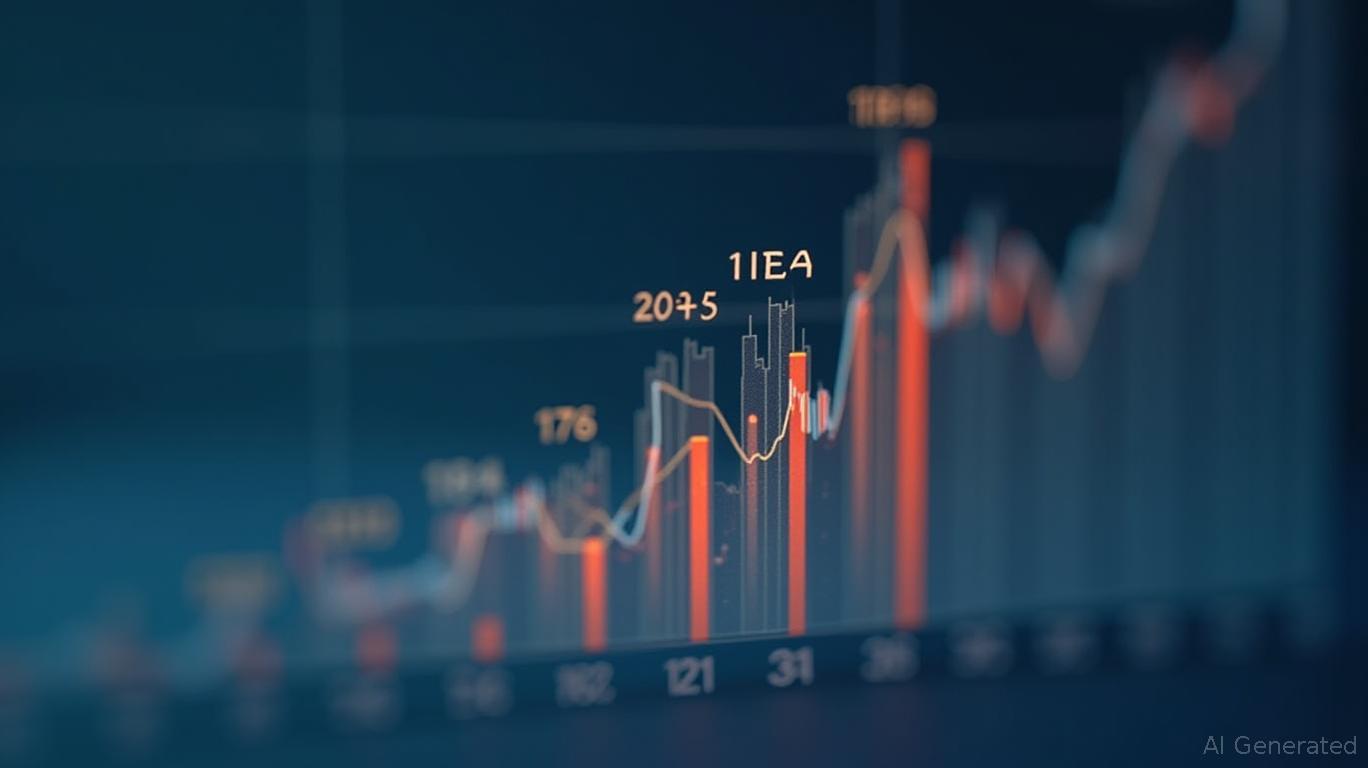Navigating Yield in a Volatile Rate Environment: The Case of HYHG's $0.3878 Distribution
The ProShares High Yield—Interest Rate Hedged ETF (HYHG) recently declared a monthly distribution of $0.3878, a figure that underscores its role as a yield-seeking tool in an era of economic uncertainty. With central banks globally calibrating policies amid inflationary pressures and trade risks, HYHG’s strategy—designed to shield investors from interest rate volatility—has never been more critical. This article examines the significance of this distribution within the broader context of dividend trends, macroeconomic shifts, and the ETF’s unique hedging mechanism.
Ask Aime: What is the significance of High Yield—Interest Rate Hedged ETF's declared $0.3878 distribution amidst economic uncertainty?
The Macro Backdrop: Dividend Growth and Rate Risks
Recent data reveals a nuanced landscape for dividend-paying assets. The S&P 500’s dividend growth is expected to moderate to 6–7% in 2025, down from earlier projections, as companies adopt caution amid lingering economic headwinds. Meanwhile, the Federal Reserve’s pause-and-assess approach to interest rates—keeping the federal funds rate steady at 3.9%—has created a crosscurrent for bond investors. High-yield corporate bonds, which typically offer premium returns, face dual pressures: rising credit risks and the potential for further Fed hikes.
HYHG’s distribution of $0.3878 (up slightly from its 2024 average of $0.36–$0.37) reflects its ability to navigate these challenges. By hedging against Treasury rate fluctuations, the ETF isolates the credit component of high-yield bonds, offering income without direct exposure to interest rate swings.

HYHG’s Strategy: How It Works
HYHG tracks the FTSE High Yield (Treasury Rate-Hedged) Index, which combines:
1. Long positions in USD-denominated high-yield bonds (rated Ba1/BB+ or lower) issued by U.S. and Canadian firms.
2. Short positions in U.S. Treasury securities matched to the portfolio’s duration.
This structure aims to neutralize interest rate sensitivity, leaving returns dependent on credit fundamentals—such as issuer performance and default rates—rather than macro rate shifts. The hedge is rebalanced monthly to maintain a near-zero duration, ensuring the strategy adapts to evolving Treasury yields.
Distribution Trends and Sustainability
HYHG’s $0.3878 distribution aligns with its historical range of $0.34–$0.38 per share since 2023. While modest, these payouts are consistent with the ETF’s focus on stable income rather than high-yield speculation. Key metrics reinforce this stability:
- The S&P 500’s average dividend payout ratio (35.78% as of 2024) suggests companies have ample room to sustain or grow dividends, a trend HYHG leverages by selecting issuers with manageable leverage and liquidity.
- Corporate cash reserves, nearly quadruple their early-2000s levels, provide a buffer for dividend payments even during earnings volatility.
Risks and Considerations
While HYHG mitigates rate risk, it does not eliminate all threats:
1. Credit Risk: High-yield bonds inherently face higher default probabilities. The ETF’s exclusion of pay-in-kind bonds and issuer concentration limits (no more than 2% per issuer) aim to reduce this exposure but cannot eliminate it.
2. Liquidity Constraints: The hedging strategy relies on Treasury futures markets, which may experience volatility during periods of extreme rate shifts or geopolitical instability.
3. Opportunity Cost: In a falling rate environment, HYHG’s hedge could cap upside potential, as unhedged high-yield bonds would benefit from declining yields.
Market Context and Investment Implications
The $0.3878 distribution gains significance when viewed against broader market dynamics:
- Fed Policy: The Fed’s neutral stance has kept yields in a narrow range, favoring HYHG’s hedged approach over traditional bond funds.
- ECB Cuts: The European Central Bank’s recent rate reductions (to 2.25%) highlight global accommodative policies, indirectly supporting high-yield credit spreads.
- Dividend Growth Stocks: HYHG’s yield (~4.6% annualized) competes with dividend growth stocks, but its hedging appeal shines in volatile rate environments.
Conclusion: A Niche Tool for Income Seekers
HYHG’s $0.3878 distribution exemplifies its role as a niche income vehicle in a complex macro landscape. With the S&P 500’s dividend growth slowing and interest rate risks elevated, the ETF’s strategy to isolate credit risk offers a compelling alternative for portfolios seeking stability.
Crucially, HYHG’s historical consistency—$0.34–$0.38 distributions since 2023—aligns with its mandate, and its hedging mechanism remains intact despite 2025’s economic uncertainties. While not immune to credit cycles, its structured approach to risk management positions it as a viable option for income-focused investors willing to tolerate moderate volatility.
In a world where central banks walk a tightrope between inflation control and growth preservation, HYHG’s distribution underscores the value of tactical hedging. For those prioritizing steady income without rate exposure, this ETF remains a strategic bet in an increasingly uncertain market.










